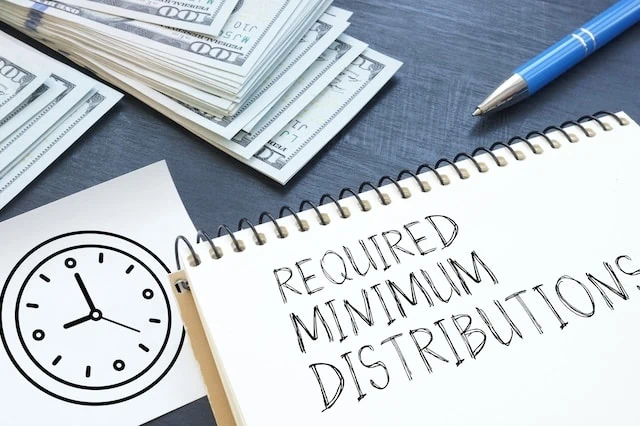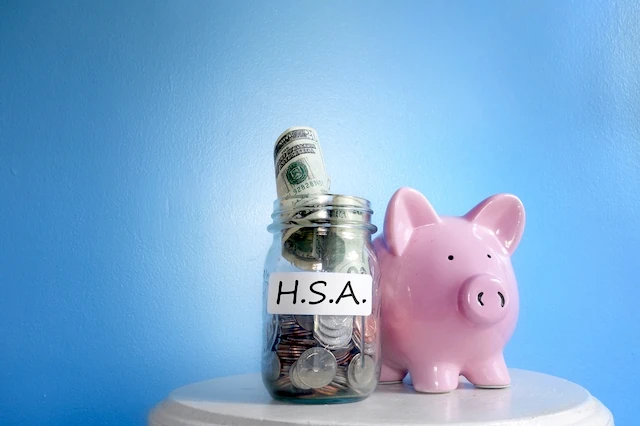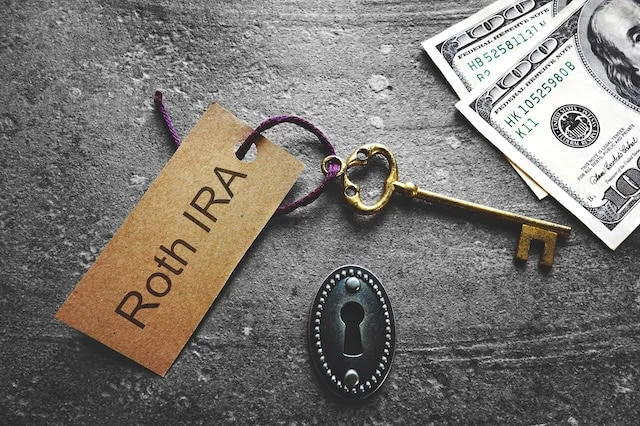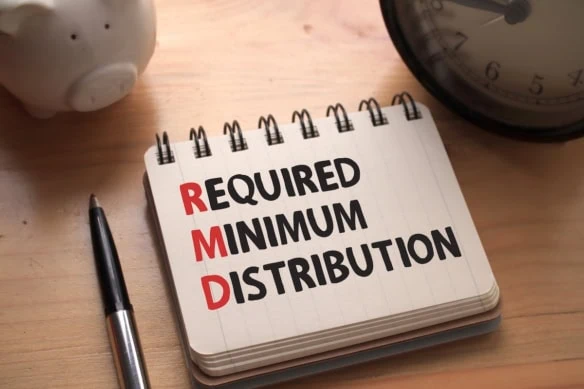Most retirement plans prohibit you from withdrawing your money too early, levying penalties against you to encourage you to leave that money alone and let it grow—then once you turn the appropriate age, those penalties are off the board, letting you collect money as you wish.
But at a certain age, the rules shift from “Here, feel free to withdraw your savings!” to “OK, seriously, you’re going to need to withdraw your savings now.”
Enter the required minimum distribution (RMD), which is a certain amount of money you must withdraw from these plans every year. And while many retirees have no issues with making their RMDs year in and year out, there are some situations in which you might want to lower your RMDs.
Today, I’ll discuss a few strategies for reducing the level of your RMDs in retirement. I’ll also give you a rundown of how RMDs work, and why you might want them to be smaller.
What Are RMDs?

RMDs are the minimum amounts a person has to withdraw from certain retirement accounts each year. The amount typically is calculated by dividing the previous Dec. 31 account balance by one’s life expectancy, based on a life expectancy factor. As you get older, your RMDs increase.
Importantly, required minimum distributions are exactly that: minimums. You can withdraw more than the RMD if you want. But if you withdraw an amount higher than your RMD in one year, you can’t apply the excess to a later year.
Lastly, these are the rules for the original account owner. Different rules apply to inherited accounts.
Do you want to get serious about saving and planning for retirement? Sign up for Retire With Riley, Young and the Invested’s free retirement planning newsletter.
Why Might You Want to Withdraw Less From Retirement Accounts?

There are two main reasons why some people want to lower their RMDs:
- To limit taxation: If you withdraw from a tax-deferred retirement account, such as a traditional 401(k) or IRA, that money will be taxed at your regular income tax rate. However, if what you need to withdraw to cover your living expenses is less than your RMD, then you’re subjecting more of your income to taxes for that year than you otherwise would have needed to.
- To prolong investment gains: Each dollar withdrawn from your account is a dollar that can no longer grow within the account. If you don’t need the money from RMDs, then RMDs are forcing you to liquidate positions you otherwise would have left alone to continue growing.
Related: How to Invest for (And in) Retirement: Strategies + Investment Options
At What Age Do RMDs Start?

Generally speaking, required minimum distributions for workplace retirement plans (401(k)s, 403(b)s, etc.), as well as traditional IRAs, SEP IRAs, and SIMPLE IRAs, once you reach age 73.
However, they don’t begin right away:
- Your first RMD is due by April 1 of the year following the year in which you turn 73. The RMD is based on your account balance as of Dec. 31 of the year before the year in which you turn 73.
- If you turn 73 in 2025, your first RMD would be due by April 1, 2026, based on your account balance as of Dec. 31, 2024.
- Your second RMD is due by Dec. 31 of the year following the year in which you turn 73. The RMD is based on your account balance as of Dec. 31 of the year in which you turn 73.
- If you turn 73 in 2025, your second RMD would be due by Dec. 31, 2026, based on your account balance as of Dec. 31, 2025.
However, if you have a 401(k) or other workplace retirement plan, but you are still working, you can delay taking RMDs until the year in which you retire (unless you own 5% or more of the business sponsoring the plan).
If you don’t withdraw the full amount of the RMD by the due date, you may be subject to an excise tax of 25%.
Your first RMD will be due by April 1 of the year following the year
Once you turn 73 years old, you must take required minimum distributions from any traditional IRA, SEP IRA, or SIMPLE IRA accounts you own, regardless of your employment status. You can wait until April 1 of the following year, if you so choose.
Your RMDs also will begin at age 73 if you have a workplace retirement plan, such as a 401(k) … if you are retired. However, If you have a workplace retirement plan, such as a 401(k), and are retired, your RMDs also begin at age 73. However, if you are still working at that age, you’re allowed to delay your RMDs from your 401(k) or equivalent until the year you retire, unless you’re a 5% owner of the business sponsoring the plan.
What happens if you ignore the rule? Those who don’t withdraw the full amount of the RMD by the due date might be subject to an excise tax of 25%. That amount can be lowered to 10% if you fix the mistake within two years.
Related: How Long Will My Savings Last in Retirement? 4 Withdrawal Strategies
How to Limit RMDs

Much of what you can do to limit RMDs is going to be proactive—that is, before you get to retirement. But if you’re already in retirement, you still have a few options.
The following are some of the ways you can lower your RMDs to keep your tax burden down and your assets growing.
Related: Don’t Overpay for Medicare: How to Avoid the Late Enrollment Penalty
1. Invest in Roth Retirement Accounts

Roth IRAs, as well as designated Roth accounts (such as Roth 401(k)s and Roth 403(b)s), have no RMDs whatsoever for original account holders. The only time RMDs come into play with these accounts is upon the death of the original account owner—at which point the account and/or funds are transferred to beneficiaries, who will have to follow certain RMD rules.
Part of this is a relatively recent change, courtesy of the Secure 2.0 Act. Prior to 2024, designated Roth accounts were subject to RMD rules.
In other words: Investing in a Roth account, as opposed to a traditional account, will lower your RMDs in retirement because these accounts don’t require RMDs. You’ll only have to pull RMDs from traditional retirement plans.
Related: When Should You Take Social Security?
2. Invest in an HSA

Another tax-advantaged account that doesn’t have RMDs is the health savings account (HSA).
Contributions to an HSA can reduce your taxable income, funds in the account can be invested (and grow tax free), and you can make tax-free withdrawals at any age if that money is used for qualified medical expenses (QMEs).
The thing is: These funds roll over every year, and you never need to make withdrawals until you want to. So rather than spend them each year while you’re still contributing, you could save them to tackle your health care costs in retirement. That would allow you to take distributions whenever you wanted, with no RMDs, and you’d even avoid taxes as long as you spent those funds on QMEs.
Just note the limitations: You can only open and contribute to an HSA if you are covered under a qualifying high-deductible health plan (HDHP) and have no other health coverage (limited exceptions), including Medicare. You also can’t be claimed as a dependent on another person’s tax return.
Related: 6 Common HSA Mistakes to Avoid
3. Invest in Annuities (Outside of Retirement Accounts)

Some retirement planners see an appeal in annuities—especially those that offer a guaranteed income for life. They can be held within a qualified retirement account, such as a traditional IRA or 401(k)—but if they are, they’re “qualified annuities” that must follow RMD rules in the same way other investments in the account do. Conversely, annuities held in Roth accounts aren’t subject to RMDs.
But you don’t have to own an annuity in a retirement account at all. Annuities can be held in a taxable account, too. These “non-qualified annuities” don’t require RMDs. However, your annuity might require annuitization, which is when you convert the annuity into periodic income payments—which effectively act like RMDs in that they’re periodic withdrawals that are subject to taxes.
Annuities are complex contracts to begin with, and different types of annuities provide different benefits. It’s best to talk to a financial advisor to determine whether an annuity makes sense within your personal financial situation.
Related: How Much Money Do You Need to Work With a Financial Advisor?
4. Initiate a Roth Conversion

If you’re nearing or in retirement, and you wish you had started contributing to a Roth account earlier (but don’t have the secret to time travel), you can still enjoy the benefits of a Roth account by executing a Roth conversion.
In a Roth conversion, you move money from a traditional retirement account into a Roth account.
It sounds easy and painless, but it’s not. You’ll need to pay taxes on any money you move within the year you make the conversion—and depending on how much you move, that could be a hefty tax bill.
However, once your conversion is finished, your money will be allowed to grow tax-free, and you won’t have any RMDs.
Note that you can’t withdraw earnings or even contributions for at least five years unless you’re willing to pay a 10% penalty. And once it’s done, it’s done—you can’t undo a Roth conversion.
Related: What Is a Backdoor Roth Conversion? [Retirement Strategy for High-Earners]
5. Make a Qualified Charitable Distribution

You don’t need to do any planning during your pre-retirement years to take advantage of this strategy.
If you are age 70½ or older, you may make a qualified charitable donation (QCD) directly from an IRA to a charity, then omit that amount from your gross income. And once you reach age 73, a QCD can count against your RMDs—as long as it’s made directly from the IRA to a qualified charitable organization (as defined in the tax code).
There is a limit here: In 2025, your QCDs are capped at $108,000 for individuals or $216,000 for a married couple.
Still, this is a great way to do good while decreasing your taxable income and fighting off RMDs. If you were planning to donate to charity anyways, making QCDs is a win-win strategy.
Want to talk more about your financial goals or concerns? Our services include comprehensive financial planning, investment management, estate planning, taxes, and more! Schedule a call with Riley to discuss what you need, and what we can do for you.
Related: What Is the Standard Deduction?









